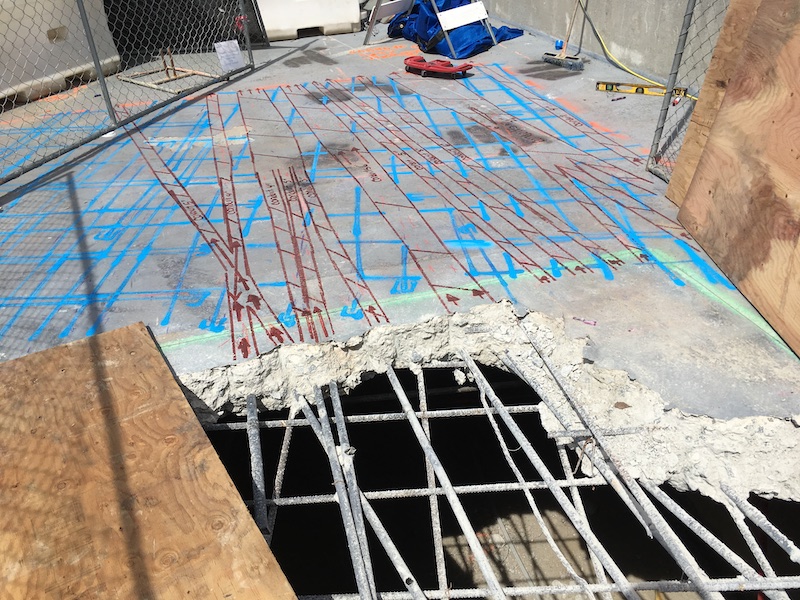Past the Surface Area: Leveraging Advanced Concrete Scanning Techniques for Unmatched Precision and Understanding
In the world of building and infrastructure maintenance, the quest for precision and thoroughness is unending. Advanced concrete scanning techniques have emerged as vital tools in this quest, offering a glimpse below the surface to reveal a globe of vital understandings. By harnessing sophisticated modern technologies, professionals can reveal anomalies, assess the problem of concrete structures, and make informed choices that shape the training course of jobs. The implications of these strategies prolong far beyond simple surface-level assessments, promising a depth of precision and understanding that is unmatched.
Importance of Advanced Concrete Scanning
The value of using innovative concrete scanning strategies depends on the unmatched accuracy they offer for identifying sub-surface abnormalities and making certain architectural integrity. By utilizing cutting-edge technologies such as ground-penetrating radar (GPR), electromagnetic induction, and advanced finder imaging, building experts can dive underneath the surface of concrete frameworks with a degree of accuracy that far surpasses traditional inspection techniques. Concrete Scanning. These strategies allow the recognition of surprise dangers like rebar rust, gaps, conduits, or post-tension wires that might jeopardize the stability and security of a structure gradually
Furthermore, advanced concrete scanning supplies invaluable understandings into the total condition of a concrete element without the requirement for intrusive measures, minimizing the threat of creating damage during the assessment process. The capacity to determine the precise location and deepness of prospective issues enables targeted fixings and upkeep, eventually extending the life expectancy of the structure and maximizing its efficiency. Essentially, the relevance of advanced concrete scanning can not be overemphasized in the realm of building and facilities upkeep, where precision and reliability are vital.
Kinds of Cutting-Edge Technologies

Abnormalities and Flaw Detection

In addition to GPR, concrete scanning strategies like thermography and impact-echo screening are also effective in spotting abnormalities and issues. Thermography utilizes infrared technology to identify variations in surface temperature level, indicating prospective areas of issue such as delamination or wetness access. On the various other hand, impact-echo testing includes assessing like this acoustic reactions to find gaps, splits, and other problems within the concrete. By leveraging these advanced methods, specialists can proactively resolve architectural concerns, guaranteeing the durability and security of concrete frameworks.
Assessing Concrete Problem
Exactly how can designers accurately examine the problem of concrete structures to ensure their long life and safety? Numerous advanced concrete scanning methods are used for this purpose. Ground-penetrating radar (GPR) is typically made use of to assess the interior framework of concrete, identifying voids, splits, and various other anomalies that might compromise its stamina.
Additionally, aesthetic assessment remains an essential component of concrete condition assessment. Engineers visually check out the surface area for indicators of deterioration, such as spalling, breaking, or discoloration. Integrating non-destructive screening approaches with aesthetic assessments permits for an extensive examination of concrete problem, making it possible for engineers to identify potential issues beforehand and execute prompt upkeep or repair services. By leveraging these innovative strategies, engineers can ensure the long-term longevity and safety and security of concrete frameworks.
Enhancing Decision-Making Processes
In the world of infrastructure management, enhancing decision-making procedures is essential for making sure the effective maintenance and longevity of concrete frameworks. Enhanced decision-making processes in concrete monitoring entail using advanced scanning methods to collect in-depth information on the condition of structures. By leveraging modern technologies such as ground-penetrating radar and 3D imaging, stakeholders can make informed choices pertaining to substitute, support, or repair work approaches.
These progressed scanning techniques offer invaluable understandings right into the interior make-up of concrete, identifying possible problems such as gaps, cracks, or deterioration that might not be noticeable on the surface area. This level of comprehensive info enables aggressive upkeep preparation, reducing the threat of architectural failures and boosting the overall life-span home of concrete frameworks.
Furthermore, by incorporating electronic documents and evaluation tools right into the decision-making process, stakeholders can track the development of concrete conditions over time, making it possible for predictive maintenance techniques and optimizing resource allotment. Ultimately, the integration of innovative concrete scanning techniques boosts decision-making processes by providing unequaled precision, insight, and performance in framework monitoring.
Conclusion
Finally, advanced concrete scanning strategies provide unrivaled accuracy and understanding in discovering abnormalities, flaws, and evaluating the problem of concrete frameworks. By leveraging advanced modern technologies, decision-making processes can be boosted, resulting in more educated and efficient solutions for maintaining and repairing concrete facilities. These strategies play an important role in guaranteeing the safety and security and go to my blog longevity of concrete structures, making them an indispensable tool in the area of building and construction and design.
Moreover, advanced concrete scanning gives very useful understandings into the general condition of a concrete component without the need for intrusive actions, lessening the risk of triggering damage during the assessment process - Concrete Scanning. One more innovative innovation is 3D X-ray scanning, which supplies comprehensive photos of the interior structure of concrete, offering beneficial info without the need for devastating testing. Furthermore, Concrete Cover Meters are utilized to measure the density of concrete cover over reinforcement bars accurately. Improved decision-making procedures in concrete administration involve making use of advanced scanning techniques to collect comprehensive data on the problem of structures.In final thought, advanced concrete scanning techniques use unequaled precision and understanding in detecting abnormalities, flaws, and examining the condition of concrete structures